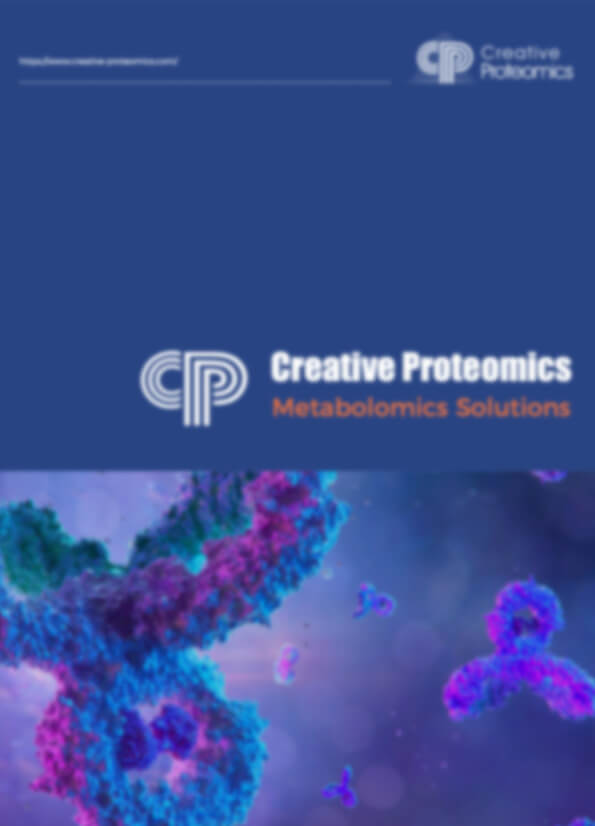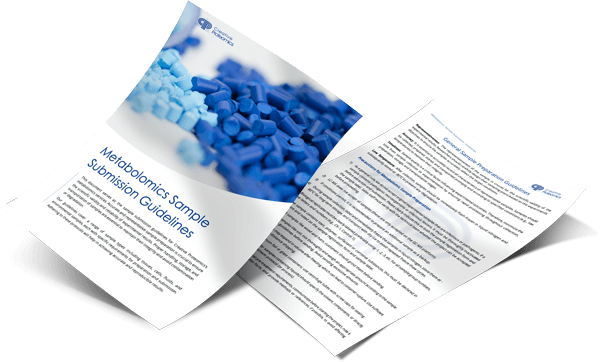5-Hydroxytryptamine (5-HT) Quantitative Analysis Service – Accurate, Fast & Reliable Detection
At Creative Proteomics, we provide comprehensive 5-HT analysis with precision and speed. Our lab employs Agilent HPLC systems paired with UV or MS detection, allowing you to:
- Analyze samples such as tissue extracts, blood, plasma, CSF, and more
- Detect trace-level serotonin with excellent reproducibility
Submit Your Request Now
×- Intruduction
- Methods
- What We Offer
- Advantage
- Platform
- Workflow
- Case Example
- Sample Requirement
- FAQ
- Publication
What is 5-Hydroxytryptamine (5-HT) and Why Does It Matter?
5-Hydroxytryptamine (5-HT), commonly known as serotonin, is a powerful brain chemical. It plays a critical role in regulating sleep, appetite, mood, pain perception, and even body temperature. Often labeled as the "feel-good" neurotransmitter, serotonin influences both mental health and physical well-being.
In scientific and clinical research, monitoring 5-HT levels helps in exploring conditions such as depression, anxiety, schizophrenia, and migraines. Because it's involved in so many bodily functions, serotonin is a primary focus in neurology, pharmacology, and psychiatry.
Serotonin is synthesized from the amino acid tryptophan and exists in the central nervous system as well as the gastrointestinal tract and blood platelets. Approximately 90% of serotonin is found in the gut, where it regulates intestinal movements. However, the serotonin in the brain—although only a small fraction—is what influences mood, cognition, and pain sensitivity.
Because 5-HT does not cross the blood-brain barrier, it's essential to assess its levels directly within the relevant biological matrices such as cerebrospinal fluid or brain tissue. This fact alone elevates the complexity and necessity of precise, validated methods for quantifying 5-HT levels.
Why Quantifying 5-HT Levels is Crucial for Modern Research
Measuring the exact concentration of 5-HT in biological samples can unlock critical data:
- Neurodegenerative diseases: Studies link altered 5-HT levels with Parkinson's and Alzheimer's.
- Psychiatric research: Low serotonin is associated with depression and sleep disorders.
- Drug development: Pharmaceutical companies rely on 5-HT analysis to evaluate drug efficacy, especially for SSRIs (selective serotonin reuptake inhibitors).
- In neurobiological research, monitoring 5-HT levels helps reveal individual differences in serotonin regulation, particularly in response to various physiological or experimental conditions. Additionally, studies exploring the gut-brain axis frequently profile serotonin levels to better understand the relationship between microbiota activity and neurotransmitter dynamics.
Accurate quantification is essential not just for understanding serotonin's biological role, but for supporting translational and preclinical studies that require robust neurochemical profiling. This is why researchers and CROs are turning to expert partners like Creative Proteomics.
How Is 5-HT Measured? A Look at the Leading Analytical Methods
High-Performance Liquid Chromatography (HPLC)
- Widely used for routine 5-HT analysis
- Cost-effective and offers decent sensitivity
- Works well for tissue homogenates and plasma samples
- Compatible with UV and electrochemical detectors
HPLC is considered a gold standard in clinical labs due to its reproducibility and affordability. Using a reversed-phase C18 column and UV detection (typically at 254 nm), HPLC enables consistent quantification for moderate-to-high concentration samples.
LC-MS/MS for Advanced Quantification
- Ultra-sensitive and highly specific
- Perfect for low-concentration samples like cerebrospinal fluid (CSF)
- Enables simultaneous quantification of multiple neurotransmitters
- Ideal for both research and clinical diagnostic studies
Mass spectrometry coupled with chromatography offers unmatched precision. At Creative Proteomics, LC-MS/MS is frequently employed for targeted neurotransmitter panels, especially in large-scale neuroscience projects.
Introducing Our 5-HT Quantitative Analysis Service at Creative Proteomics
We follow strict QC standards to ensure reliable results across every project, whether you're studying psychiatric drugs or mapping serotonin levels in experimental models.
Our Targeted Metabolomics Service further enables precise quantification of neurotransmitters like serotonin. For projects involving broader metabolic profiling, consider our Untargeted Metabolomics or Multi-Omics Integrative Services.
Why Researchers Trust Creative Proteomics
We stand out because of:
- Cutting-edge instruments: HPLC, LC-MS/MS, GC-MS, and NMR
- Expert scientists: Decades of experience in neurochemistry and analytical workflows
- Custom protocols: Tailored to your species, matrix, and research goals
- One-stop service hub: From targeted lipidomics to full bioinformatics analysis
Platform
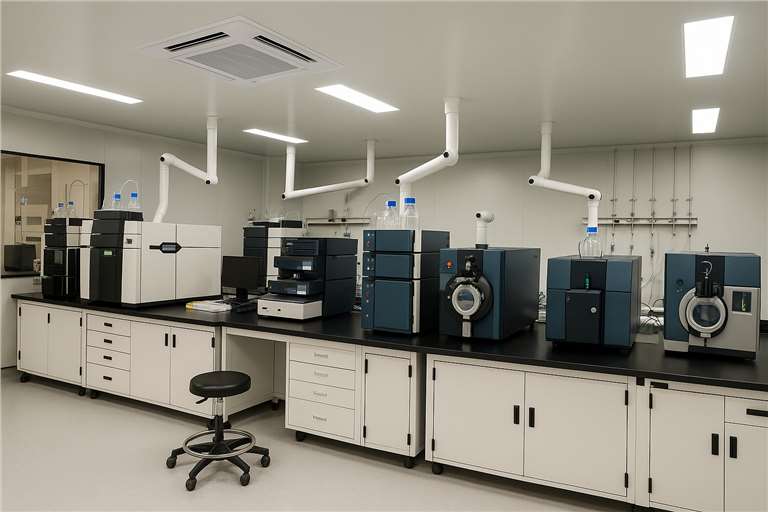
Workflow of 5-HT Quantitative Analysis Service
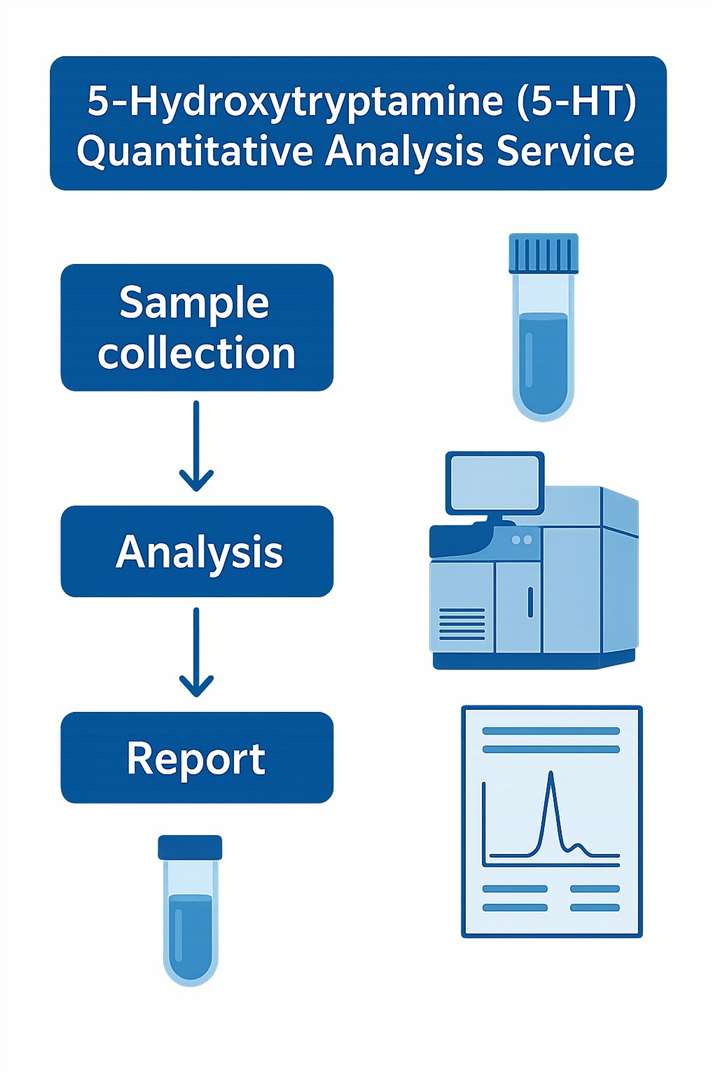
Case Example: Analysing Serotonin in Rat Brain Tissue
We recently analysed a client's rat brain sample, specifically targeting the raphe nuclei. The analysis was performed using the Agilent 1260 Infinity HPLC system, equipped with a diode array detector (DAD) for ultraviolet detection. The chromatographic separation used an Agilent Zorbax Extend-C18 column (250 mm × 4.6 mm, 5 μm particle size), ensuring excellent resolution and reproducibility.
Key Data from the Case Study:
Analyte: 5-HT (Serotonin)
Standard Curve Equation: y = 11151x - 0.108; R² = 1.000
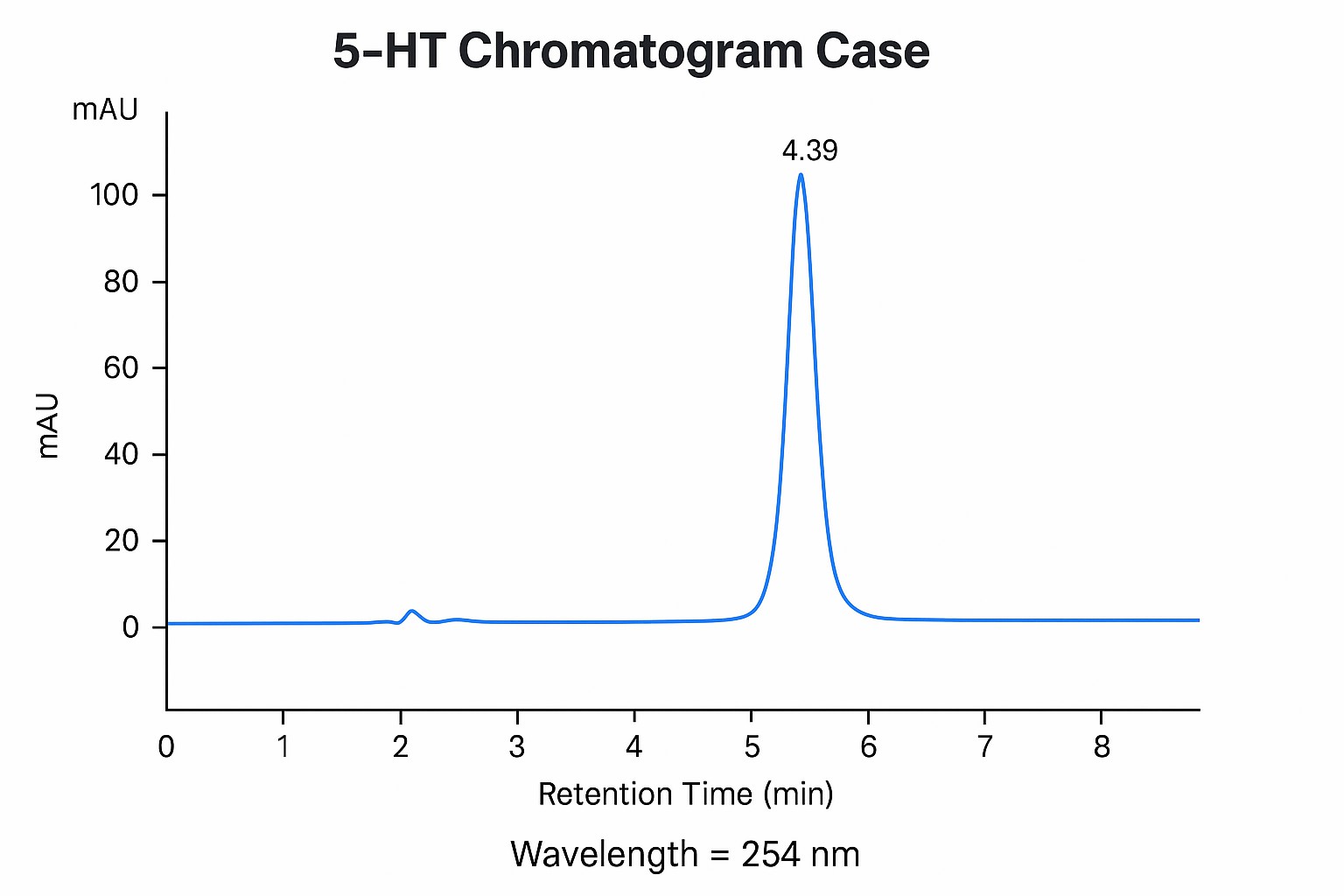
Retention Time (RT): 4.437 minutes
The chromatogram of the sample is as follows:
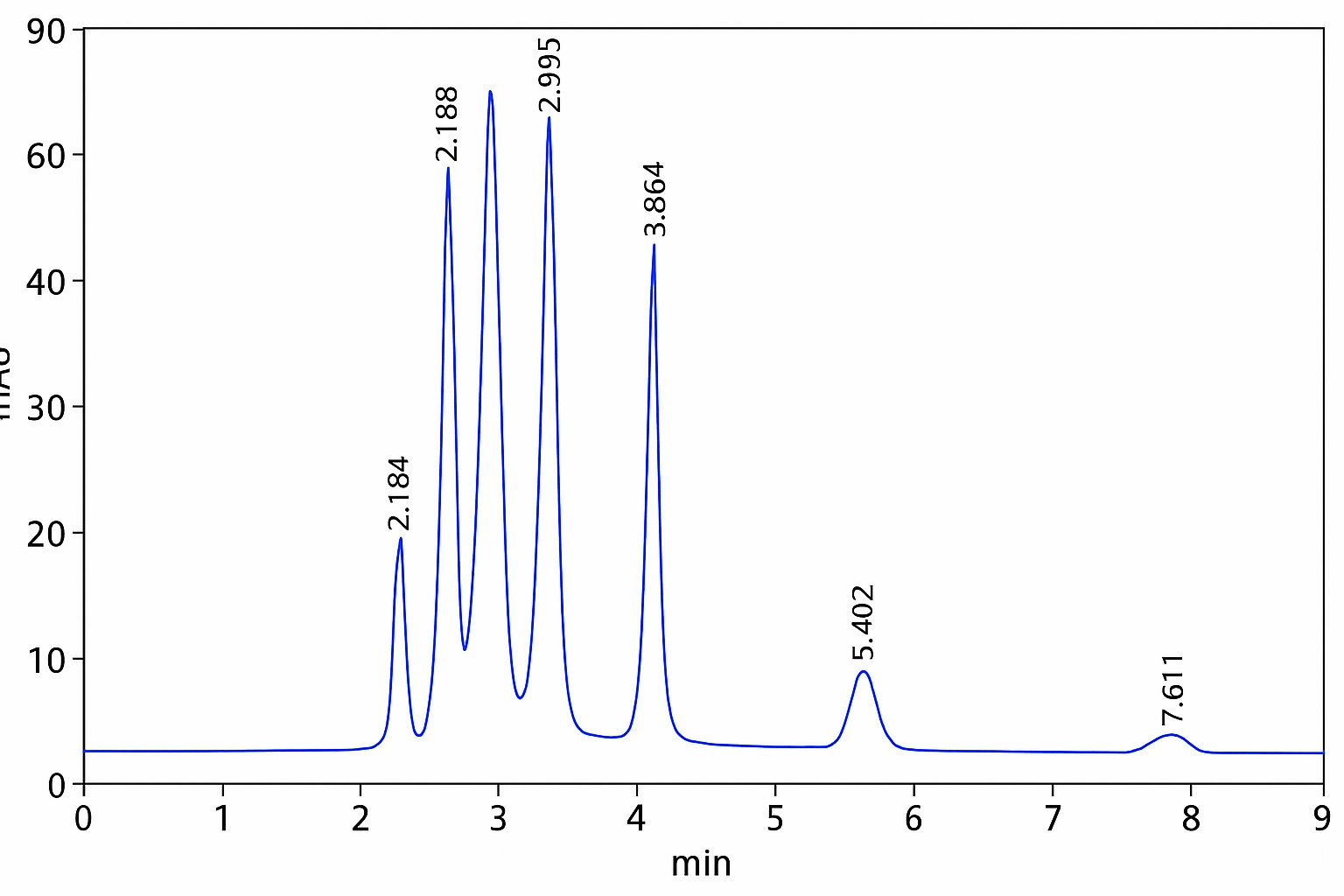
Quantification: High linearity and accurate signal detection confirm the method's robustness for brain neurochemical analysis.
| Sample Name | Sample ID | Peak Area | Concentration (µg/µL) | Content (µg/mg) |
|---|---|---|---|---|
| Raphe Nucleus–1 | 1 | 46.9212 | 0.00299015 | 0.029902 |
| Raphe Nucleus–2 | 2 | 82.06905 | 0.00520294 | 0.052029 |
| Raphe Nucleus–3 | 3 | 10.5363 | 0.00069949 | 0.006995 |
| Raphe Nucleus–4 | 4 | 37.43768 | 0.00239311 | 0.023931 |
| Raphe Nucleus–5 | 5 | 40.38709 | 0.00257879 | 0.025788 |
| Raphe Nucleus–6 | 6 | 9.19859 | 0.00061527 | 0.006153 |
| Raphe Nucleus–7 | 7 | 18.36774 | 0.00119253 | 0.011925 |
| Raphe Nucleus–8 | 8 | 32.36505 | 0.00207375 | 0.020738 |
Sample Requirements
| Sample type | Recommended sample size | Pre-treatment and storage |
|---|---|---|
| Tissue | 100-200 mg | Snap freezing in liquid nitrogen, stored at -80℃. |
| Urine | 200-500 μL | 5000×g 4℃ Centrifuge for 30-60min, remove supernatant, store at -80℃. |
| Serum/plasma | >100 μL | Collected serum/plasma, snap freezing in liquid nitrogen, stored at -80℃. |
| Cerebrospinal fluid, amniotic fluid, bile and other body fluids | >200 μL | 4℃ Centrifuge for 10min, (or filter using 0.22μm membrane), remove supernatant and store at -80℃. |
| Suspension cells | >1*107 | Centrifuge and collect cells after liquid nitrogen snap freezing and store at -80℃. |
| Walled cells | >1*107 | Cultured walled cells are stored in 1.5ml centrifuge tubes, snap freezing in liquid nitrogen and stored at -80℃. |
| Cell supernatant | >2 mL | centrifuge at 4℃ for 3 minutes, take the supernatant and store at -80℃. |
Frequently Asked Questions (FAQs)
What is 5-HT and why is it important?
5-Hydroxytryptamine (5-HT), or serotonin, regulates mood, appetite, sleep, and cognitive function. It's a core target in mental health research.
How is 5-HT quantitatively measured?
Typically via HPLC, LC-MS/MS, or electrochemical detection, depending on the required sensitivity and sample type.
What are the clinical applications of 5-HT analysis?
Diagnosis and monitoring of conditions like depression, anxiety, migraines, and neurodegenerative disorders.
What samples can be tested for 5-HT levels?
Commonly tested materials include brain tissue, plasma, cerebrospinal fluid, and urine.
How reliable are 5-HT quantitative analysis services?
With validated methods and experienced analysts, services like ours achieve high reproducibility and accuracy.
Learn about other Q&A about proteomics technology.
Featured Publications Using Creative Proteomics' Metabolomics Services

- Calcium homeostasis and stable fatty acid composition underpin heatwave tolerance of the keystone polychaete Hediste diversicolor. Environmental Research. 2021. https://doi.org/10.1016/j.envres.2021.110885
- The Brain Metabolome Is Modified by Obesity in a Sex-Dependent Manner. International Journal of Molecular Sciences, 2024, https://doi.org/10.3390/ijms25063475
- UDP-Glucose/P2Y14 Receptor Signaling Exacerbates Neuronal Apoptosis After Subarachnoid Hemorrhage in Rats. Stroke, 2024. https://doi.org/10.1161/STROKEAHA.123.044422
